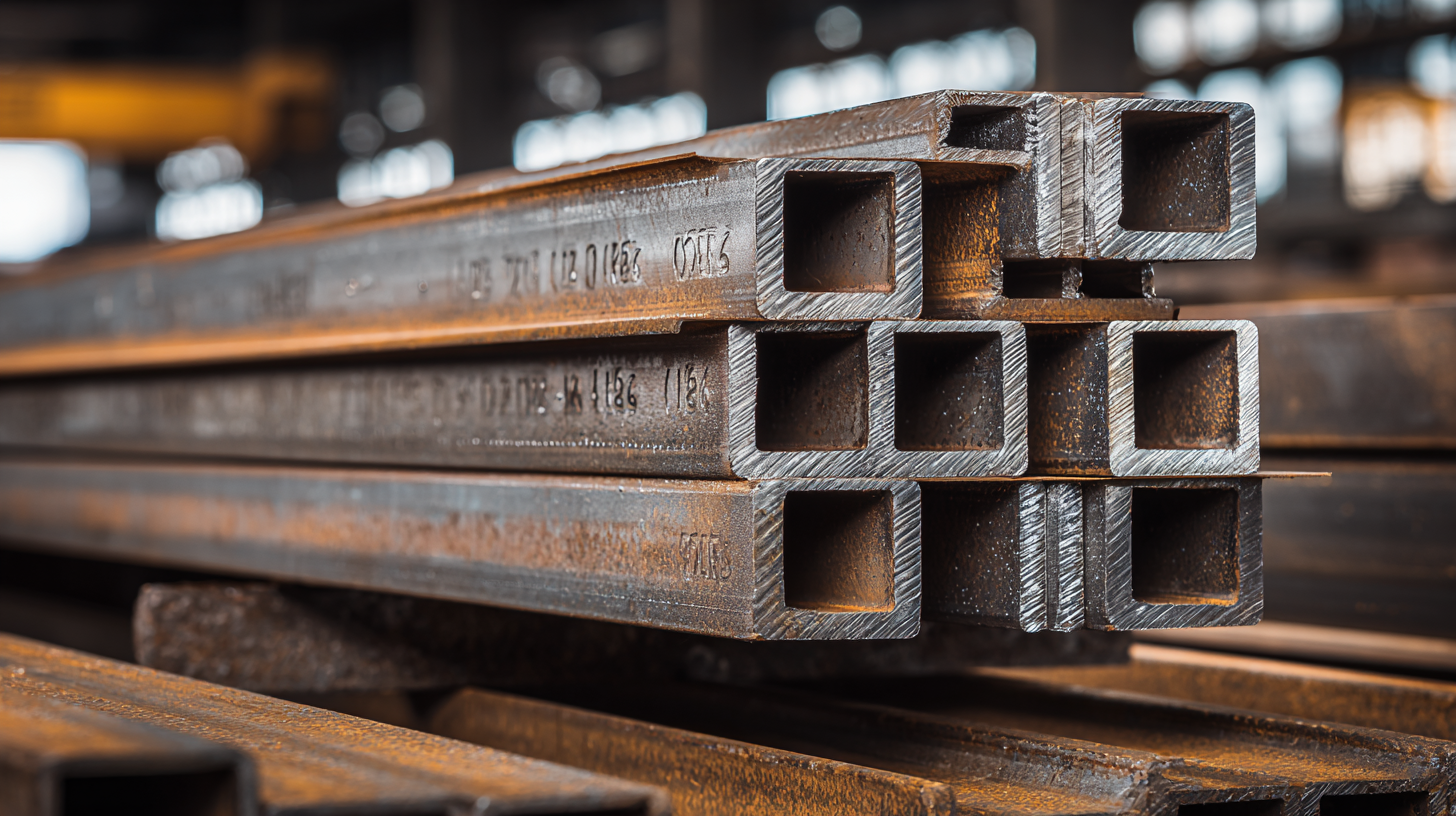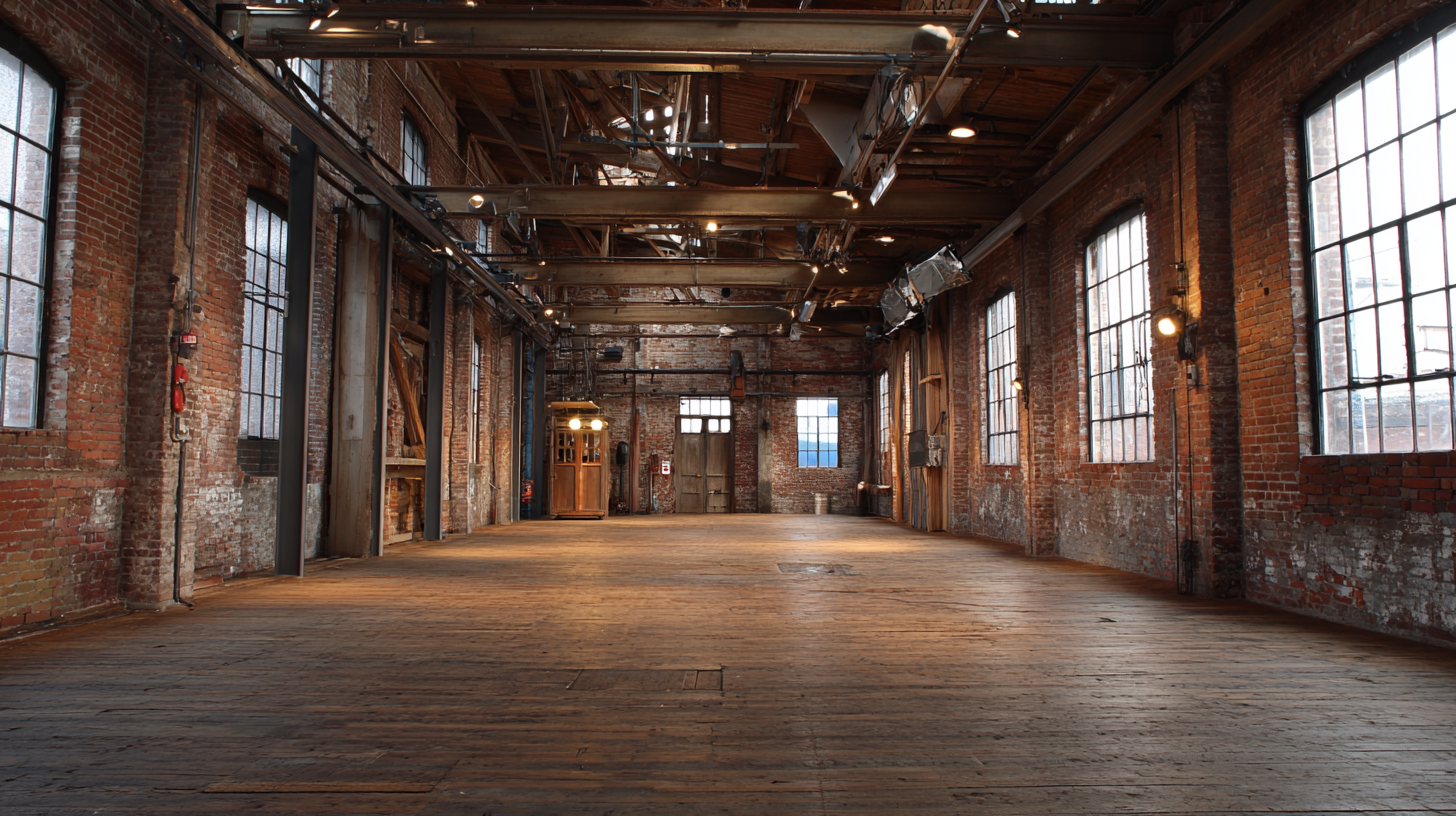
In today's global market, the demand for high-quality construction materials is at an all-time high, with the Beam Of Steel standing out as a crucial element in various industrial applications. From residential buildings to towering skyscrapers, the versatility and strength of steel beams are unparalleled.

However, selecting the best Beam Of Steel requires not only an understanding of its unique features but also insight into the manufacturing process. This blog aims to guide prospective buyers through the labyrinth of options available, offering valuable tips on how to choose reputable manufacturers. By exploring the diverse applications of Beam Of Steel and identifying the essential criteria for quality assessment, we empower global buyers to make informed decisions that ensure structural integrity and long-lasting performance in their projects.
In the realm of steel beam manufacturing, adherence to industry production standards is crucial for ensuring product reliability and safety. The global automotive cross car beam market illustrates this necessity, particularly as manufacturers navigate different requirements based on vehicle types such as SUVs, MPVs, and hatchbacks. A recent report highlighted that the demand for steel beams in automotive applications is expected to grow at a CAGR of 4.5% over the next five years, driven by advancements in manufacturing processes like stamping and extrusion, which provide significant quality control and structural integrity.
Moreover, the adoption of innovative manufacturing techniques such as 3D printing with fiber-reinforced composites is reshaping the landscape across several industries, including automotive and aerospace. This technology not only enhances design flexibility but also enables the production of lightweight components that meet the rigorous standards set by manufacturers. According to industry experts, a large portion of new car models is projected to incorporate these composite materials by 2025, as they allow for better fuel efficiency and improved performance. This convergence of standards and emerging technologies signifies a pivotal shift in how products are designed and manufactured, ensuring that the best beams of steel are not only robust but also sustainable.

When it comes to selecting steel beams for construction and industrial applications, understanding the key features that define the best options in the global market is essential. The global steel beam market is projected to reach USD 1 trillion by 2027, driven by rapid urbanization and infrastructure development. One defining feature is the grade of the steel used; high-strength low-alloy (HSLA) steel beams are favored for their improved strength and durability. According to a recent report by Smith & Associates, HSLA beams can provide up to 20% greater strength than standard carbon steel beams, making them ideal for demanding structural requirements.
Another important characteristic is the beam's shape and dimensions, as these impact load-bearing capacity and application versatility. I-beams (or H-beams) are particularly popular due to their advantageous load distribution capabilities, allowing for longer spans and reduced weight. The global steel beams market also emphasizes compliance with safety standards, such as those set by ASTM International and the European Committee for Standardization (CEN), which ensure that steel beams meet specific performance and quality criteria. As northward markets seek innovations in structural engineering, the adoption of advanced manufacturing techniques like hot-rolled and cold-formed steel beams is becoming increasingly common, promising enhanced performance and longevity.
Steel beams are a fundamental element across numerous industries, showcasing their versatility and strength in various applications. In construction, for instance, they form the backbone of buildings, bridges, and other structures, providing essential support and stability. Their high load-bearing capacity allows for larger spans and taller edifices, facilitating innovative architectural designs. As the construction industry continues to evolve, the demand for advanced steel beam solutions has surged, promoting the use of prefabricated and high-performance steel options.
Beyond construction, steel beams find significance in manufacturing and transportation. In manufacturing, they are integral to the framework of machinery and conveyors, ensuring the safe movement of goods in factories. Similarly, in the transportation sector, steel beams are pivotal in the design of railways and highways, contributing to the durability and safety of infrastructure. The adaptability of steel beams to various environments and conditions reinforces their importance across industries, making them a preferred choice for global buyers seeking reliable and efficient structural solutions.
| Industry | Application | Steel Beam Type | Unique Features |
|---|---|---|---|
| Construction | Structural framework for buildings | I-Beam | High strength-to-weight ratio |
| Manufacturing | Heavy machinery support | H-Beam | Enhanced load-bearing capacity |
| Transportation | Bridge construction | Tapered Beam | Aerodynamic design for reduced wind resistance |
| Energy | Support for wind turbines | Box Beam | Excellent torsional rigidity |
| Retail | Shelving and racking systems | C-Channel Beam | Versatile application with easy installation |
When it comes to selecting steel beams for construction projects, understanding global steel beam quality standards is paramount. Different regions around the world have established specific regulations and guidelines to ensure the integrity, safety, and performance of steel products. For instance, in the United States, the ASTM (American Society for Testing and Materials) sets forth stringent standards for steel beams, assessing factors like yield strength, tensile strength, and chemical composition. Similarly, the European Union adheres to the EN (European Norms) standards, which emphasize both structural reliability and environmental sustainability.
A comparative analysis of these standards reveals variations in testing methods and material properties that can significantly impact the performance of steel beams in construction. For example, while ASTM standards may prioritize specific mechanical properties, EN standards may focus more on life cycle and recycling considerations. Additionally, countries like Japan and China have developed their own standards, such as JIS (Japanese Industrial Standards) and GB (Guobiao Standards), which reflect local industrial practices and technological advancements.
These discrepancies necessitate careful consideration by global buyers to ensure compliance and suitability for their particular projects, as well as to maintain safety and functionality across different applications.
The production of steel beams has been significantly transformed by emerging technologies, leading to enhanced quality, efficiency, and sustainability. Advancements such as automation in manufacturing processes and the use of artificial intelligence for quality control are setting new industry standards. These innovations not only streamline the production but also ensure that the steel beams meet the rigorous demands of various engineering projects worldwide.
Tips: As a buyer, it's essential to assess the technology used by manufacturers. Look for companies that leverage AI and automation, as these indicate a commitment to quality and efficiency. Moreover, consider selecting suppliers that embrace sustainable practices in their steel beam production, as this can significantly impact the overall environmental footprint of your projects.
Additionally, the integration of smart technologies is paving the way for smart steel beams equipped with sensors to monitor structural integrity in real-time. This proactive approach allows timely maintenance and enhances safety in construction.
Tips: When sourcing steel beams, inquire about the incorporation of smart technology. This feature not only adds value to your projects but also ensures longevity and safety, ultimately reducing future costs associated with repairs and inspections.
